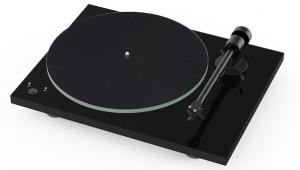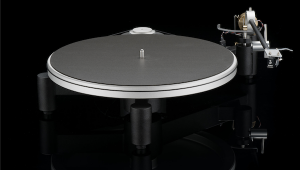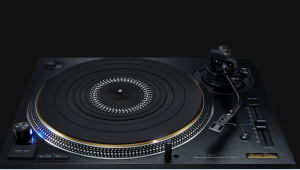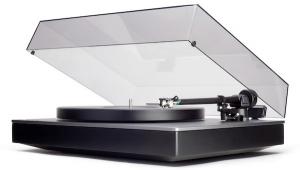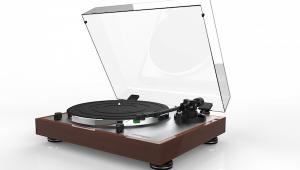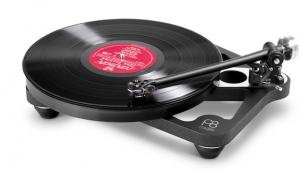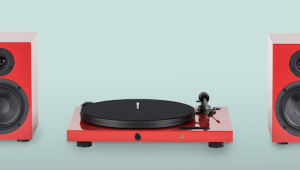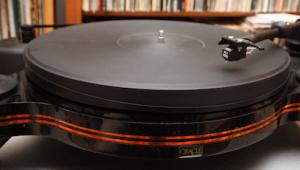Oracle Delphi Mk.VI turntable Page 2

The suspension's ability to isolate the system from vibration remained constant whether the damping was applied or withdrawn. But when damping was applied, the overall sound become more solid and better organized. In particular, the bass was tighter and faster, images were more finely focused, more compacted and solid, and more low-level detail emerged.
Listening
I listened first as Oracle's Jacques Riendeau installed the Delphi Mk.VI with the SME arm and Benz-Micro Thalia cartridge. It didn't take long to hear that while the cartridge was okay, it was somewhat soft-sounding, producing images that were less than precisely defined, and too large and billowy. In short, unless that sort of big, warm, "analog-y" sound is what you like—and I don't—it wasn't a good match for the Oracle. Something faster, tighter, and leaner was called for.
I began with the Lyra Helikon SL. That cartridge greatly tightened and speeded up the sound, producing fast, clean transients, a reasonably supple midband (though in this regard the Thalia was better), and deep, well-defined, rhythmically certain bass. And at about $2800, the Lyra's price is still not out of bounds for use with an $8500 turntable. This combo was remarkably quiet, with a bottom-end foundation more solid and tightly focused than I'd expected from a spring-suspended design. Still, a mass-loaded design will produce more slam, if perhaps at the expense of a somewhat elevated noise floor.
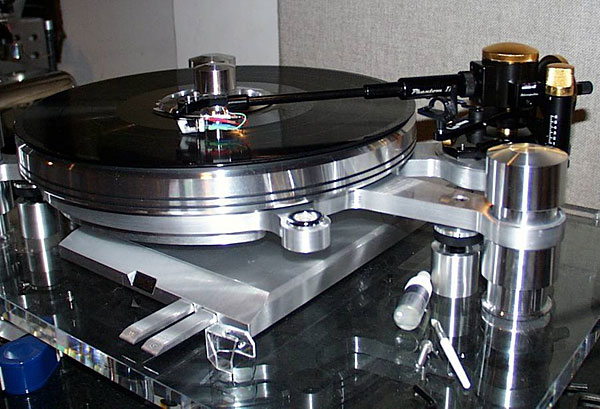
Although the Delphi Mk.VI sports a sophisticated suspension system, it surely didn't hurt that it was sitting on my Harmonic Resolution System SXR rack and S1 isolation base. The platter's speed is adjustable, and it was easy to set it precisely. The 'table began to run slightly fast during my third week of listening, probably as the bearing broke in. After a single adjustment, it remained precisely at 33.33 and 45rpm for the rest of the review period. The pitch was subjectively steady and difficult to fault, at least with concentric records. But I kept coming back to how "black" the backgrounds were. That new thrust pad and the tighter bearing tolerance must be the reason.
I'd lucked into a 1975 set of Prokofiev's piano concertos 1–5, performed by Vladimir Ashkenazy, with André Previn conducting the London Symphony, and recorded at London's Kingsway Hall by Arthur Lilley, Kenneth Wilkinson, and Phil Wade, on UK Decca LPs. This set allowed me to explore the Delphi Mk.VI's ability to reproduce a very-well-recorded piano in front of a well-recorded orchestra, captured in a superb-sounding hall by engineers who gave the venue enough space to breathe life into the sound—all as I listened to fiery, exciting music.
The Oracle-SME-Lyra combination produced a big, slightly warm orchestral sound. String tone was rich, with a pleasing golden glow. The piano's lower register was cleanly rendered and remained well defined against the hall's reverberant field. The upper keyboard sounded supple, with a rich, woody, yet sparkling bite. Image stability and solidity were never in question, and the system's dynamic punch announced a turntable that seemed in complete control. Moving up to Lyra's Titan i cartridge further refined the sound.
After recording, at 24 bits and 88.2kHz, a track from a 180gm vinyl edition of Art Pepper's The Way It Was (Mobile Fidelity Sound Lab MFSL 1-297), I swapped the SME arm for the Graham Engineering Phantom 2 with Lyra Titan i and recorded the track again. After listening to the same pile of records and drawing conclusions, I then directly compared my two recordings of the Pepper track and heard the same things. It should be no surprise, given its heritage, that the SME 345 is a really good arm, particularly in terms of tonal balance. The Graham Phantom 2, however, produced greater image solidity, as well as cleaner, faster transients, with an overall improvement in clarity, focus, and harmonic coherence.
Summing Up
With the improvements in the bearing, and especially with the addition of the silicone damping system, the Mk.VI edition not only retains the Oracle Delphi's position as one of the most beautiful turntables in the world; it reestablishes it as a formidable contender in and well beyond its price class.
- Log in or register to post comments



